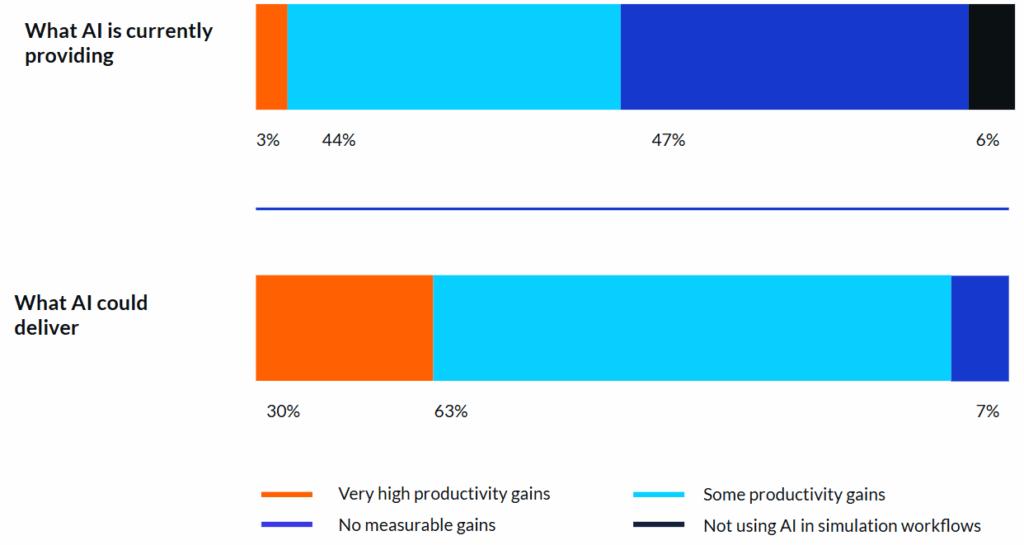A new global survey of engineering leaders finds that although most anticipate productivity improvements from AI in design and simulation workflows, only 3% currently report significant gains—indicating a gap between expectations and current outcomes.
The State of Engineering AI 2025 report, published today by SimScale in partnership with Global Surveyz, surveyed 300 senior engineering leaders from large enterprises (1,000+ employees) across the US and Europe. It offers an early benchmark of AI adoption in engineering, identifying cultural, process, and technical challenges that still need to be addressed.

- AI ambition far outpaces execution:
93% of engineering leaders expect AI to deliver productivity gains, with 30% anticipating very high gains. But just 3% report achieving that level of impact today. (see figure 1) - Cloud-native adopters pulling ahead:
Organizations using cloud-native simulation tools are 3x more likely to have mature AI programs and 6x more likely to have clean, centralized data—critical for scaling AI. They are also twice as confident in achieving AI goals within the next 12 months. - Siloed data and legacy tools remain top barriers:
55% cite siloed data and 42% cite legacy desktop CAE tools as major blockers—highlighting a foundational infrastructure gap across many organizations. - Leadership misalignment is slowing progress:
42% of CTOs cited resistance to AI adoption within technical teams—but engineer team leaders themselves report resistance just 29% of the time, suggesting technical teams are more open, ready, and motivated to adopt AI than leadership assumes. - AI is seen as a growth driver, not just an efficiency play:
Engineering leaders expect AI to fuel greater design innovation (54%), engineering productivity (51%), and faster time to market (47%)—with reduced costs ranking lowest on the list of expected benefits.
The “3% Club”: What the most progressive teams do differently
Despite the gap between expectations and outcomes, a small group of engineering leaders—the “3% club”—are already achieving measurable results with Engineering AI, driven by effective implementation rather than additional AI concepts. They share four key traits:
- Modernized Engineering Architecture: They’ve eliminated siloed, desktop-era toolchains in favor of cloud-native platforms. Their engineering data is centralized, accessible, and structured — using open formats and APIs.
- Integrated Agentic Workflows: These teams are building and integrating AI agents directly into live workflows — not as bolt-on tools, but as embedded decision-makers at setup, evaluation, and optimization stages.
- Fast Path from Prototype to Loop: They test in low-risk settings, but move quickly to real-world, in-the-loop deployment — proving value in weeks, not years.
- Treat Data & Models as Infrastructure: They log and version everything — from simulations to models — enabling AI to be scaled, trusted, and portable across their tools and processes.
About the Research
The State of Engineering AI 2025 is based on an independent survey conducted by Global Surveyz in June 2025, covering 300 senior engineering leaders across the US, UK, and Germany, and across six core industries: industrial machinery, automotive, electronics, life sciences, energy, and AEC.
The full report is available to download at: simscale.com/state-of-engineering-ai
The post Survey shows gap between AI expectations and results in engineering appeared first on Engineering.com.

